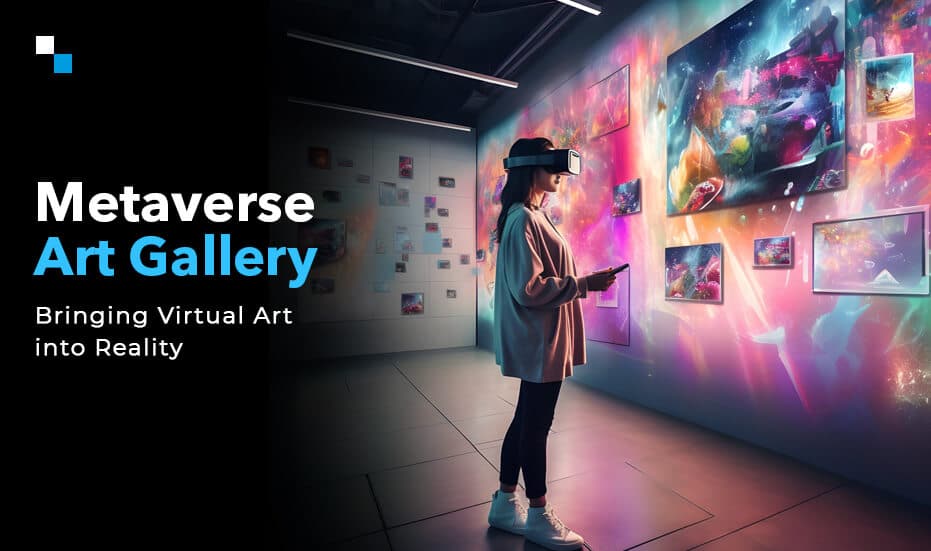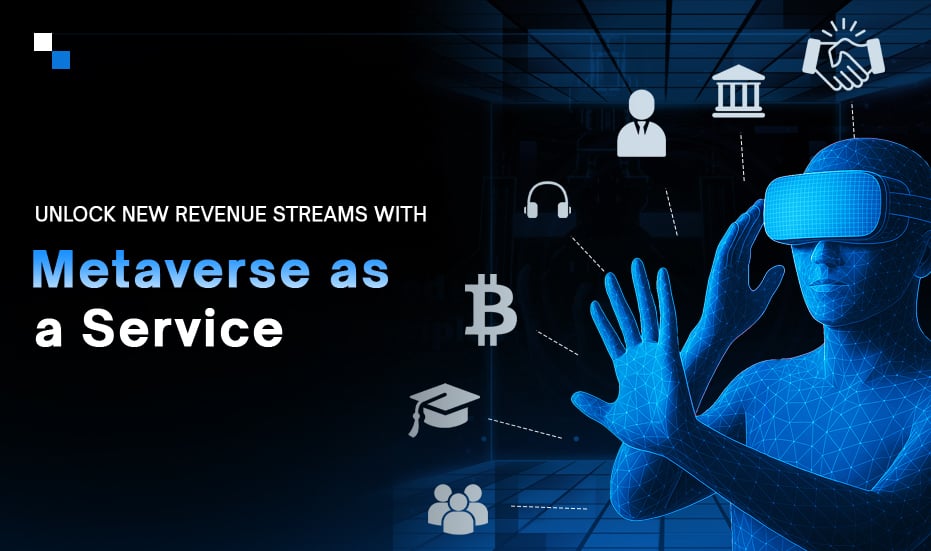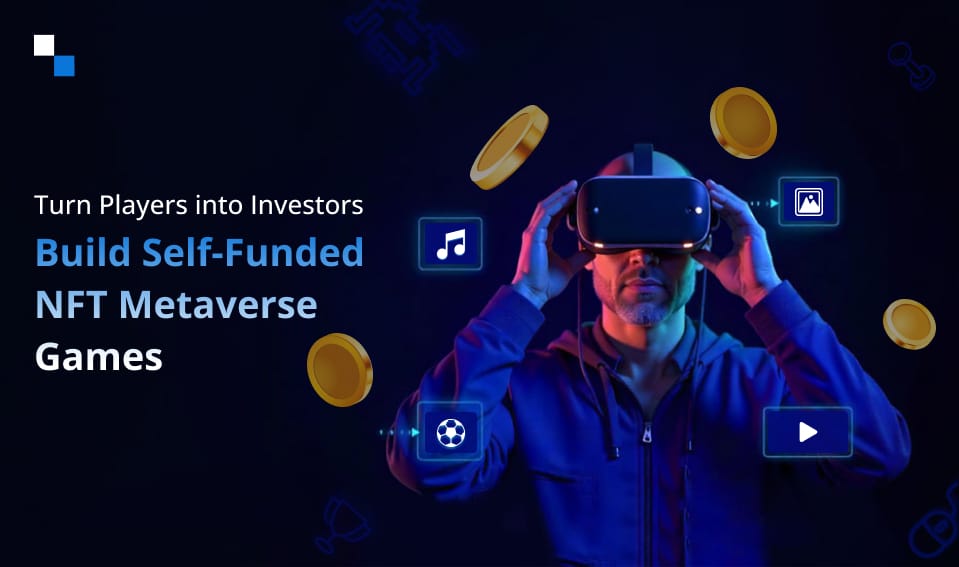
Top 10 White label P2P Lending Software Providers in 2024
October 27, 2023
A Complete Guide to Blockchain Development in 2024
October 27, 2023Creating a painting or sculpture and investing precious time in making a masterpiece is just the beginning. The real challenge lies in showcasing the artwork to the world, and not every artist is financially strong enough to rent a place to display their lifetime of art, allowing people to see what they envisioned when crafting these pieces.
However, as the world is moving at a very fast pace, so is technology. The introduction of the metaverse has made it a lot easier and eased the burden on artists who may not have the resources for physical exhibitions. Metaverse art gallery development has become a very common practice, with many artists starting to adopt this approach, resulting in increased sales.
Recently, SAP lined up its latest art exhibition, ‘The Metaverse: Dreamland or Dystopia.’ It featured 13 artists exploring the convergence of reality, virtuality, art, and technology. The exhibition was available for both in-person visits at the SAP International Training Center in Walldorf and virtual experiences. It ran until September 1, 2023
This is also an excellent way to attract a global audience who may not be able to attend a physical art exhibition for whatever possible reasons. If you are a budding artist looking for a stage to showcase your work, you are in the right place. Keep reading to learn everything about art exhibitions in the metaverse.
What is Metaverse Art Gallery Development and How Does it Work?
Digital technology is not a very new concept but rather a contemporary expression of human creativity, where you can basically do whatever you want. All real-time activities, such as visiting a showroom, museum, or even buying a car or an art piece, are possible within the metaverse itself without having to physically stop anywhere.
For example, some people may have a strong desire to attend art shows or events, but distance often makes it impractical to do so in a short timeframe. This is where creating a metaverse for such events becomes a profitable and cost-effective solution.
Metaverse marketplace development is such an easy concept for artists. They no longer need to be concerned about event logistics, theft, or damage to their artwork. Instead, they can focus on making sales. Conducting financial transactions within the metaverse is a simple process. Buyers only require a crypto wallet where they can exchange an art piece or an NFT for cryptocurrency. This process is both secure and hassle-free.
Since we’ve mentioned NFTs in relation to artworks, let’s take a look at how artists may convert their works into NFTs.
A Real World Artwork can Now be an NFT
In respect to creating a metaverse NFT marketplace the essential component one may require is NFTs.
A virtual, yet genuinely valuable, piece of art is something that has been benefiting many artists a lot recently. Assuming you’re already familiar with the term, we’ll delve further into how NFTs are game-changers in the art world. However, if you’re new to the concept of NFTs, consider reading our article, ‘A complete Guide for NFTs.’
In the past, digital artist Mike Winkelmann, also known as Beeple, sold his NFT of his work for a staggering $69 million at Christie’s, elevating him to one of the “top three most valuable living artists,” as per the auction house.
These incredibly high amounts of money are actually quite rare in the world of NFTs. Most NFT art sells for prices similar to what you’d pay for any good artwork. However, there’s a major perk for digital artists when it comes to NFTs. They have the opportunity to earn a percentage of the sale price every time their NFT is resold to a new owner. This special feature can be built into the original agreement, known as a smart contract.
Step by Step Guide to Create Metaverse NFT Marketplace
- Get a Digital Wallet:
Start by setting up a digital wallet. Think of it like a digital bank account. You’ll need this to store your NFT and the cryptocurrency used for transactions.
- Get Some Cryptocurrency:
You’ll need to buy some cryptocurrency (usually Ethereum) to make your NFT. You can do this on various online platforms. Once you’ve got some, transfer it to your digital wallet.
- Pick an NFT Marketplace:
Next, choose a place to create and sell your NFT or hire a metaverse NFT marketplace development company. There are different NFT marketplaces, each one has its own rules and costs.
- Create Your NFT:
Inside your chosen marketplace, you’ll see an option to “mint” your NFT. It’s like giving birth to your digital art. You’ll upload your artwork, give it a name, write a description, and decide if you want a cut of future sales.
- Add Some Details:
You can say if your NFT is one-of-a-kind or one of a limited number (like 1 of 10). You can also add extra content that the buyer gets when they purchase your NFT.
- Pay Minting Fees:
There’s a small cost to mint your NFT. This fee pays for the technical side of things.
- List Your NFT for Sale:
Now, you can put your NFT up for sale on the marketplace. You decide the price or whether to auction it.
- Tell the World:
To attract buyers, tell everyone about your NFT. Use social media, art communities, or wherever you think your potential buyers hang out.
- Complete the Sale:
When someone buys your NFT, everything is sorted out automatically by the blockchain. The buyer now owns your digital art.
- Get Paid:
You’ll get paid in cryptocurrency, which goes into your digital wallet. You can either leave it there or move it to your regular bank account.
Every metaverse NFT marketplace development process and blockchain might have slightly different steps, so it’s good to read up on the specific platform you’re using. But this should give you a general idea of how the process works.
Get Antier’s Assistance in your Metaverse Art Gallery Development
As mentioned earlier, many exhibitions have been held through the metaverse lately, and looking at the metaverse’s cost-effective and globally reaching benefits, it’s hard to deny that it’s the next disruptive technology. If you’re an artist looking for a platform to showcase your talent, Antier can assist you to create a metaverse NFT marketplace.
With Antier, you can turn your visions into virtual reality. We create the most realistic and immersive metaverse solutions that are fully customizable and up to your expectations. Approach Antier for your metaverse art gallery development today!



